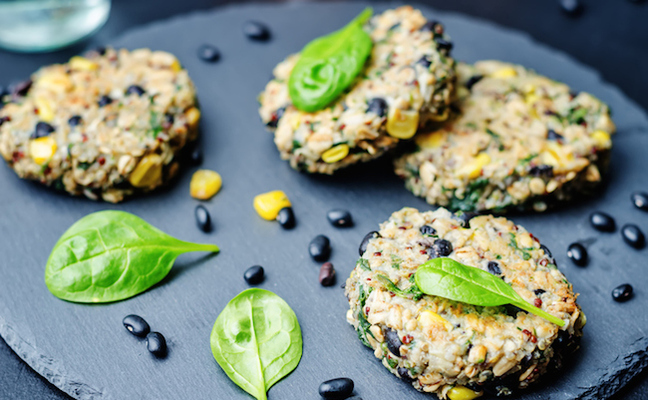We in the west are being encouraged to eat more whole grains, legumes, nuts, and vegetables. And, if you are looking to lose weight, this is especially important. If this is so, you probably could benefit from trying to have some meals that are vegetarian or vegan (I try to do this at least once a week), as such meals are generally lower in calories. But, you might be concerned by the perceived drop in your iron intake by reducing your meat consumption. Now, the thing most people don’t realise is that there are many vegetarian or vegan sources of iron.
So, what are the vegetarian or vegan sources of iron? And, what are the rules you should follow when cooking with them? Read on to find out what iron rich, vegetarian or vegan sources to include in your healthy meal plan.
Vegetarian or Vegan Sources of Iron
Well, there are many vegetarian or vegan sources of iron. Some of them might surprise you. You probably already know that spinach is rich source of iron, but did you know that kale and broccoli (and other dark leafy greens), and most dark coloured vegetables and fruits are high in iron? You might have surmised that kelp is high in sodium, but did you know that it is also rich in iron?
Some seeds are high in iron, and most notably, sesame and pumpkin seeds, so be sure to include them in your healthy meal plan. Add wheat germ and bran to your porridge or muesli, thereby increasing the iron content.
Not all sources of iron are necessarily savoury, so you can indulge your sweet tooth occasionally without guilt. For instance, molasses is a great source of iron, as are prunes, figs, dried peaches and raisins.
Here’s another surprising source: did you know onions are a great source of iron? As are avocados and bananas. So, eat them up.
You might be concerned that many of these foods aren’t great sources of protein. But, don’t worry there are abundant, iron rich, vegetable sources of protein. For instance, did you know that egg yolks are a great source of iron? As is quinoa. You probably know that you should be trying to include more legumes in your diet, but here’s another great reason to do so: a lot of them are high in iron (and of course, protein). For instance, soya beans (and hence, tofu), kidney beans, white beans, and red lentils.
Cooking to maximise iron content
Here are some tips to get the most iron from your food. Combine foods with high iron content with those that contain vitamin C, as this helps your body’s absorption of iron. Reduce your consumption of coffee and tea around the time you eat iron containing foods, as they contain compounds known as polyphenols. These compounds can combine with the iron in food to make it more difficult for our bodies to absorb it. Calcium blocks our bodies from absorbing the iron in food. So, for about half an hour before and after eating foods high in iron, avoid eating foods that are rich in calcium.
Here’s another tip: cook your food in iron pots. Foods that are acidic pull the iron from cast-iron pots. Simmering foods that are acidic, for example, tomatoes, in iron pots can raise the iron content of the mixture by more than ten times. Foods cooked with other acids, for instance red wine, vinegar, lime or lemon juice, in an iron pot can raise the iron content of the food cooked in such a way.
Adding these foods to your healthy meal plan will help you to maximise not just your weight loss (as many are lower in calories than the equivalent meat based iron source), but also will ensure you receive your body’s iron requirement.






